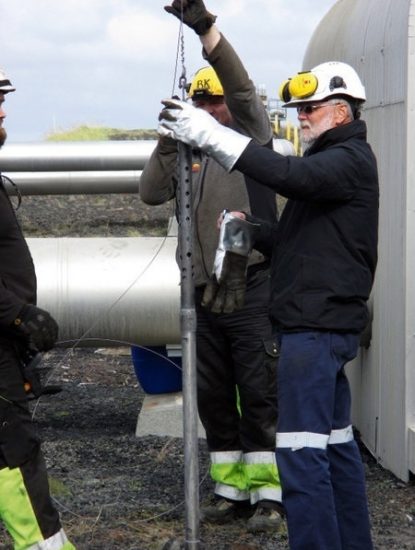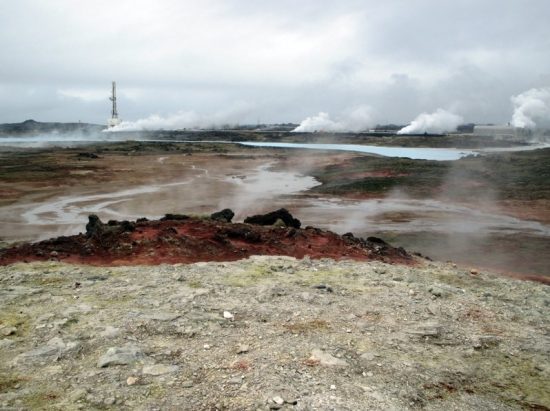



On Iceland's Reykjanes
peninsula, marine scientists found themselves prospecting for gold when they
discovered very high concentrations of gold in the seawater. This was an
unexpected find, as the gold concentration in seawater is normally extremely
low.
The sea is a gold mine – in the truest sense of
the word. Not only does the seabed contain small amounts of gold, the seawater
itself carries traces of the substance. In the first half of the 20th century,
chemists had hoped to extract gold from the oceans. However, this never
materialised, when it was discovered that a litre of seawater contained only a
few billionths of a gram of gold.
Nevertheless, scientists have long
known that when seawater is heated to more than 300 degrees Celsius, gold can
be leached from oceanic rocks, reaching concentrations thousands of times more
than in background water. When this heated seawater emerges onto the seafloor
at the hot vents (“black smokers”), it can precipitate
minerals that are rich in metal, including gold.
In Iceland, marine scientists found
very high concentrations of gold in the seawater emerging from geothermal
system deep below the Reykjanes Peninsula. It was more than 500,000 times
higher than normal seawater, and at least 100 times higher than in typical
black smokers in the deep seas.
“The measured concentrations are sufficient to
form significant gold deposits within the lifetime of the geothermal system,” said lead scientist
Mark Hannington, from GEOMAR's Marine Mineral Resources Group.
Publishing their findings in the
international journal Nature Geoscience, the scientists from GEOMAR
Helmholtz Centre for Ocean Research Kiel, the Icelandic Geosurvey and Kiel
University had collected samples from deep geothermal wells where heated
seawater from the nearby Mid-Atlantic Ridge is harnessed for electrical power
generation. A special titanium sampler was lowered into holes drilled more than
two kilometres below sea level. When it was brought back to the surface, it was
quenched from 315 degrees Celsius and the deep liquids were recovered for
analysis in special mass-spectrometry labs at the Institute of Geosciences
(CAU) at Kiel University.
The researchers estimate the amount
of gold to be at least 10,000 kilogram’s. According to Hannington, “typical mid-ocean ridge
hydrothermal systems cannot reproduce the very high concentrations of gold
observed in our study. We conclude that gold must be accumulating in the
geothermal reservoir over time, before the heated seawater is withdrawn,
resulting in the very high concentrations found in the wells.”
Dr Dieter Garbe-Schönberg, head of
Kiel University's ICP-MS Laboratory, added that the gold might occur in the
form of finely dispersed gold nanoparticles in the fluids.
The study also pointed out a
previously unrecognised mechanism for the accumulation of gold in hydrothermal
systems that could explain the formation of the metal-rich ore deposits.
Info: www.geomar.de.
Link to study:
http://www.nature.com/ngeo/journal/vaop/ncurrent/full/ngeo2661.html
 Mares
Mares 25th February 2016
25th February 2016 Reykjanesbær, Islanda
Reykjanesbær, Islanda